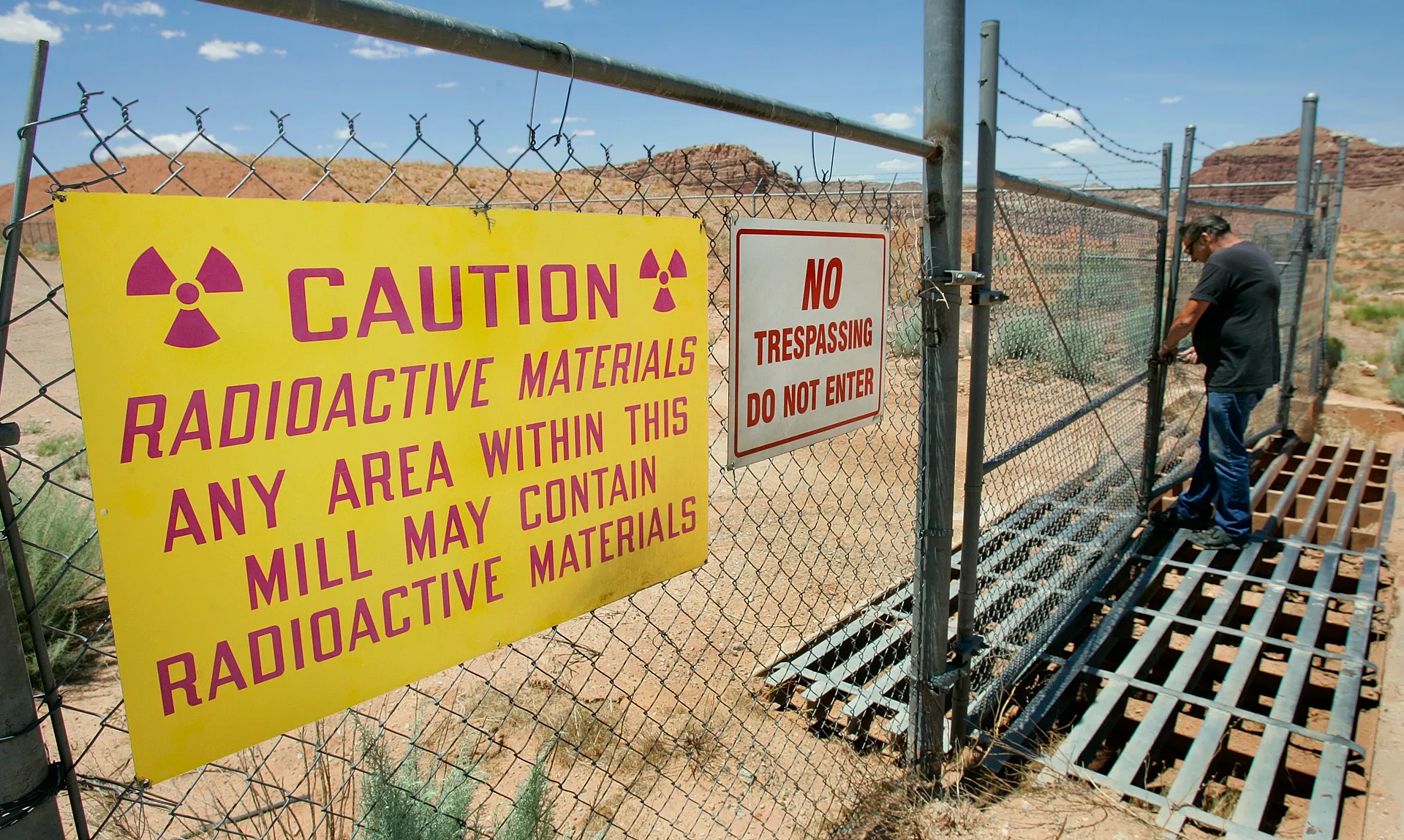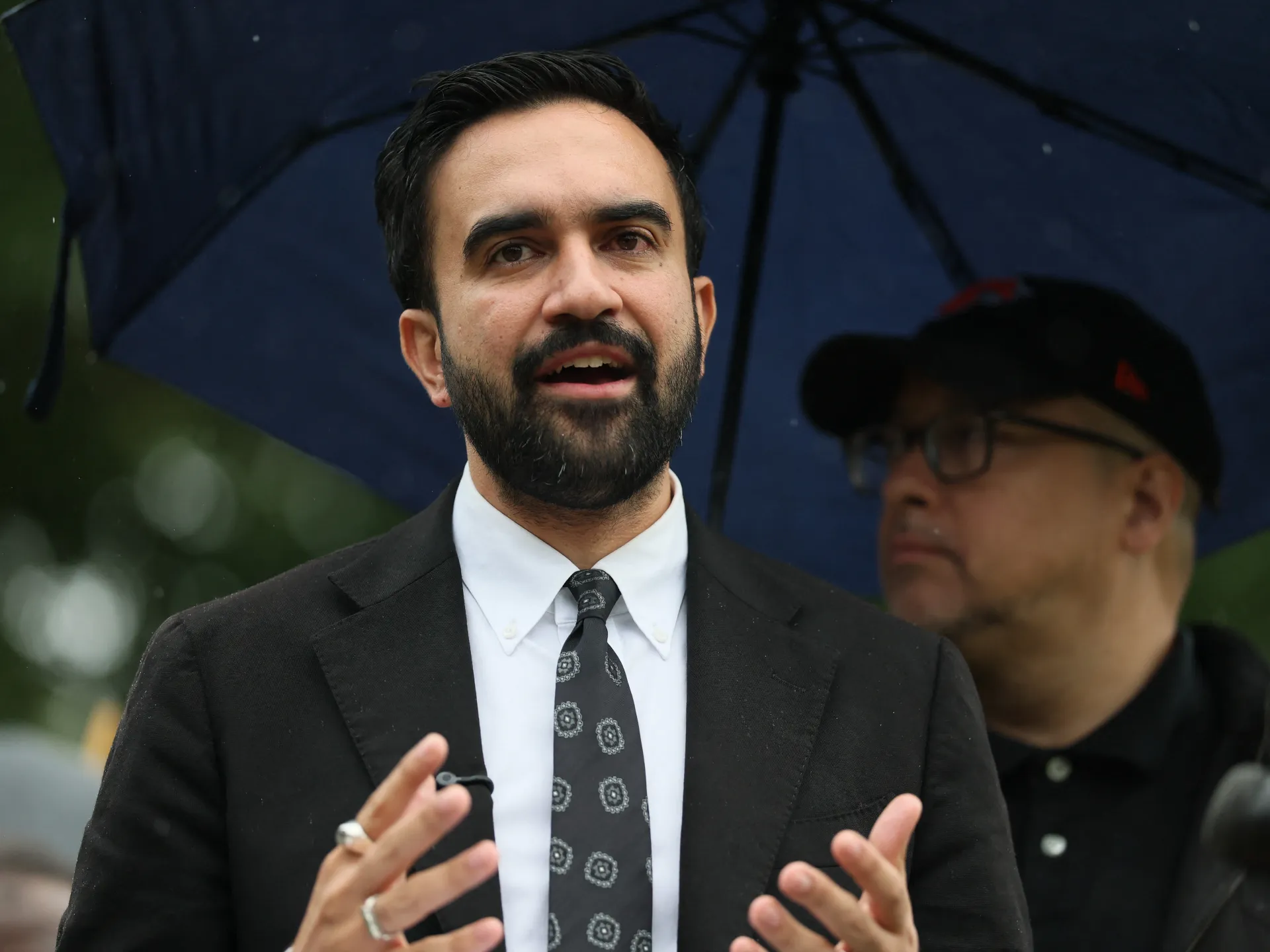Army To Bring Nuclear Microreactors To Its Bases By 2028
Army installations within the lower 48 states will have operating nuclear microreactors starting in the fall of 2028 if the Army’s Janus program moves forward on schedule. The addition of nuclear power will diversify the energy sources available on military bases and provide a critical enhancement to their resiliency, the Army says.
“What resilience means to us is that we have power, no matter what, 24/7,” Dr. Jeff Waksman, Principal Deputy Assistant Secretary of the Army for Installations, Energy and Environment, said during a media roundtable attended by TWZ at last week’s Association of the U.S. Army’s (AUSA) main annual conference.
Waksman’s comments followed a briefing earlier in the day at which Army Secretary Daniel P. Driscoll and Department of Energy (DOE) Secretary Christopher Wright jointly announced the launch of the Janus Program.
“The U.S. Army is leading the way on fielding innovative and disruptive technology,” Driscoll said. “We are shredding red tape and incubating next-generation capabilities in a variety of critical sectors, including nuclear power.”
Janus is the Army’s plan to realize President Donald Trump’s Executive Order 14299, titled “Deploying Advanced Nuclear Reactor Technologies for National Security,” which directs the Department of War to commence operation of an Army-regulated nuclear reactor at a domestic military installation no later than September 30, 2028.
Some time in the next few weeks, barring a long extension of the government shutdown, the Army will release an Area of Interest (AOI) solicitation with a draft request for proposals (RFP) attached, according to Waksman. An industry day event thereafter will give the Army feedback on potential microreactor approaches and contact with interested companies and startups.
A competition will follow, after which the Army expects to select multiple companies to build and deliver microreactor prototypes to an initial batch of base/installation sites (likely nine sites) yet to be determined. The companies selected will each be given one Army site to deliver their prototypes to, and each firm will be required to build two reactors.
“They will build one, and then in a staggered fashion, build a second,” Waksman explained. “The reason why we’re doing that is because you have to get to Nth-of-a-kind to have a commercial product. [By Nth-of-a-kind Waksman means multiple units of a product or, in this case, reactor.] We want to see that these companies have a path to get from their first prototype to the second one and beyond to the Nth-of-a-kind.”

The program is named for Janus, an ancient Roman god of beginnings, gates, and transitions. Accordingly, its approach is about transitioning from one-off prototypes to multiple-unit commercial systems, Waksman added.
It dovetails with an initiative announced by the Defense Innovation Unit (DIU) last April called Advanced Nuclear Power for Installations (ANPI). It also seeks to field nuclear microreactors that can supplement energy sources at DoW installations, whose power is typically drawn from commercial grids.
DIU is a partner in Janus and will contribute funding to the program. It will also act as the contracting officer, and Janus will use its contracting authorities. However, the Army will conduct program management. Waksman says Janus will have different technical requirements than ANPI and reflect changes in the nuclear power market, including new entrants that have emerged since last spring.
Hovering in the background is yet another nuclear project called Pele, which emerged from the DoD’s Strategic Capabilities Office (SCO) in 2022. The stated intent there was to “design, build, and demonstrate a prototype mobile nuclear reactor within five years.”

Pele was envisioned as potentially transportable operational nuclear energy, and the project continues with integrator BWXT, which is in the process of manufacturing and delivering the first advanced microreactor. The transportable nuclear reactors developed for Pele are designed to be transported within four 20-foot shipping containers, allowing them to be potentially moved to areas where the military or government may need to stand up power generation infrastructure to support military or other operations.
While Pele is developmentally interesting, Waksman said, “We do not at this time see nuclear power as a tactical application.” This is largely because tactical reactor development drives up cost, and there is currently no need for megawatt power at the combat edge, Waksman explained.
As such, Janus microreactors will go to domestic installations to bolster energy supply, and some certainly have unique needs for power beyond redundancy. For example, remote Eielson Air Force Base in Alaska relies on a 70-year-old coal-fired power plant on the base for its primary energy needs. Since 2021, the Air Force has been working to at least demonstrate a small nuclear reactor at Eielson for exactly this reason.

A next step beyond could see the deployment of small nuclear reactors to strategic support areas, which could range from the Indo-Pacific periphery, from Hawaii to Pacific islands, for instance, as well as other locales. However, Waksman stresses the need to complete the first phase before further extending the program.
Energy resilience is the core of Janus. Waksman observed that on Army installations and other service installations, power resiliency is currently 100 percent provided by fossil fuels. Renewable power generation exists on some installations, but is not considered highly resilient, nor a primary source of energy. He added that every grid globally is reliant on a base-load power source – fossil fuel, geothermal, hydropower, or nuclear.
“Unless you’re in one of the few places in the world where geothermal is viable or you have a dam nearby, your only choices are nuclear or fossil fuel at this time…There’s just no ability to have a grid that works solely on solar and wind and batteries at this point.”

“Anyone who’s seen big solar arrays on military installations knows that the moment that you have a Black Start exercise and the grid goes down, those are immediately cut off. They do not provide power, so the resiliency is fossil fuels. You have a certain number of backup power days, but that is a huge vulnerability…”
Black Start is a congressionally mandated requirement for DoW installations, testing their ability to operate without grid power in an emergency.
The microreactors that Janus will seek to deploy will be what commercial industry refers to as Generation IV or so-called “Passive Reactors” which, by design, cannot melt down. Utilizing low-enriched uranium (to about 5 percent), they will generally not be higher than 20 megawatt plants. Even so, they’ll likely offer surplus power, which could potentially provide energy resiliency to local communities.
“If everything goes black outside the fence, that’s where most soldiers live, where their families live and where a lot of critical infrastructure is,” Waksman said. “I’ve been to a lot of hardened [military] sites. I’ve yet to see one that is resilient to everything going down outside the fence line. Selling some of this [power] outside the fence line is something that we’re actively interested in doing.”

Such a scheme is in a legal gray area, Waksman noted, but there is precedent — a military-based reactor sold energy to an adjacent community in the early 1980s. However, the Army believes it could offer excess power commercially with some limitations. Waksman said that the Department of the Army is currently negotiating with Congress on this issue and is seeing bipartisan support.
Thanks to the low-enrichment nature of the small reactors, the Army does not expect a requirement for extra force protection at nuclear-powered installations.
The United States’ existing fleet of reactors runs on uranium fuel that is enriched up to 5 percent with uranium-235, called Low-enriched uranium (LEU). U-235 — the main fissile isotope that produces energy during a chain reaction — is considered safe for use in commercial nuclear reactors.
The ubiquity of LEU makes integration of small reactors on military installations more affordable, Waksman noted. Affordability is a major consideration within Janus. How much the military is willing to pay for resiliency is a hard question, Waksman admits. He offered that the Army doesn’t think nuclear power cost needs to be equivalent with fossil fuels, but just reasonably close. He cites the roughly 40 cents per kilowatt-hour (kWh) that consumers pay in Hawaii and Alaska, rather than the 10 to 12 cents per kWh paid in the continental U.S. to illustrate the point. At the 40 cents per kWh level, the Army expects there will be a significant commercial market over and above military nuclear power generation demand.

Hawaii and Alaska also illustrate the kind of environments, particularly in the Indo-Pacific, where there is current energy scarcity. Such scarcity makes moving a missile defense system, directed energy systems, large radars, or artificial intelligence data centers to an island or a remote Arctic site problematic.
The strain on available local energy infrastructure imparted by these kinds of systems means they are often limited by ad hoc diesel power generation or other arrangements, Waksman explained. Installing advanced microreactors could potentially transform such locales from energy-scarce environments to a state of energy abundance, which could support defense and other infrastructure. This could be critical to U.S. success in the Pacific.
There may be political challenges to placing microreactors on Pacific islands, other foreign territories, or even within the United States, Waksman acknowledged. But he opined that many places don’t necessarily oppose nuclear power. They oppose not being consulted about it. He says there will be pre-engagement discussion with any proposed local community. If they object, the Army won’t go there.
“We’re not here to impose nuclear power on any local communities,” he added. Foreign placements would fall under Status of Forces Agreements. Waksman points to the fact that the Navy has successfully concluded these throughout the Pacific, “so it can be done”.

Janus could also bring second and third-order benefits with it. Introducing advanced microreactors to military installations could kick-start the U.S. commercial nuclear power market and attract new blood to replenish the current critical shortage of nuclear engineers in America, Waksman said.
The model being used for the Janus competition, he explained, is the NASA COTS (Commercial Orbital Transportation System) model, which was the catalyst for the creation of SpaceX. Elon Musk’s company made space engineering cool again, inspiring students to go into the rocketry/space field, Waksman says.
“There’s a feeling [that] nuclear needs a SpaceX. There are innovative, exciting startups, so we’re hoping to cultivate them in the same way that NASA cultivated SpaceX and make nuclear sexy again and encourage more top young engineering talent to go into the field.”
Trump’s Executive Order has put the Army on a tight timeline to make Janus a reality.
“We will do everything in our power to successfully meet the Executive Order,” Waksman affirmed.
Brandon Cockrell, Deputy Assistant Secretary of the Army for Energy and Sustainability, also attended the roundtable and concluded the meeting by asserting that there is already significant competition among states and municipalities to get advanced microreactors at local bases.
“There are some states across the U.S. that are already leaning forward heavily with tax deferments and resources… This is a whole concerted effort to get the nuclear industry to the next phase in the nation.”
Contact the editor: [email protected]































